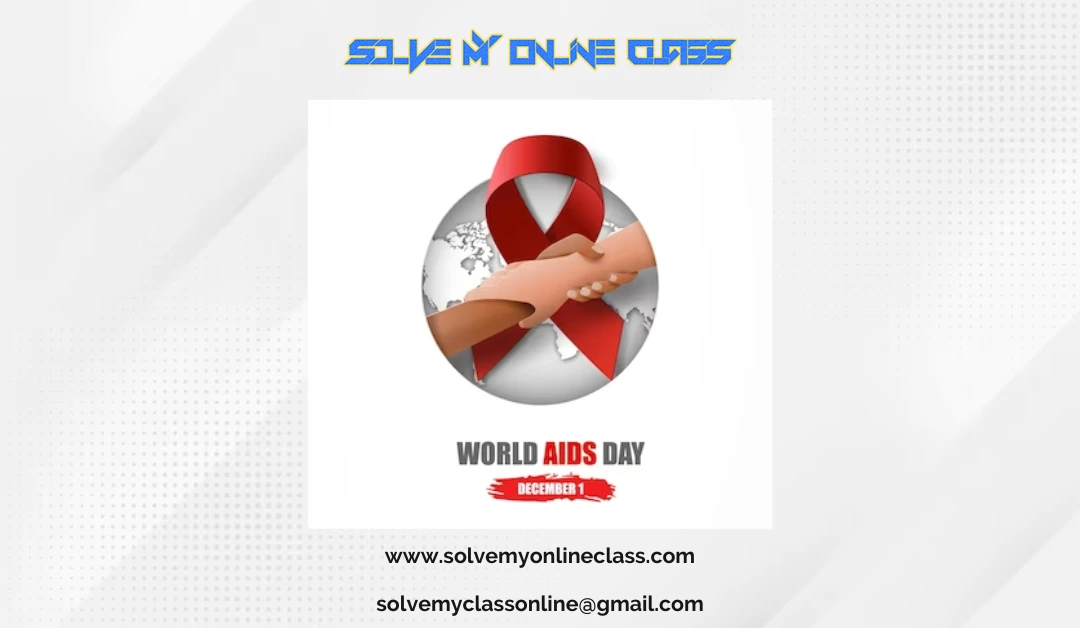Introduction:
Every year on December 1st, the world observes World AIDS Day, which serves as a painful reminder of the global fight against HIV/AIDS. On this day, we may spread awareness, remember those who have died from the virus, and honor the advancements in support, treatment, and prevention. We are approaching the one-year anniversary of my birth, therefore it seems appropriate to take this moment to discuss the background, present issues, and developments surrounding HIV/AIDS.
The History of World AIDS Day: As one of the earliest international health days, World AIDS Day was first marked in 1988. The World Health Organization (WHO) established the day with the goals of bringing people together globally to combat HIV, supporting individuals who are living with the virus, and remembering those who have lost their lives to AIDS-related illnesses. December 1st was selected to establish a significant occasion for people to unite and contemplate the worldwide impact of HIV/AIDS.
A Historical Perspective:
From a historical standpoint, the chronology spanning 1500–1600 words offers a chance to follow the development of HIV/AIDS throughout time. Though the virus is thought to have started in Central African non-human primates, it wasn’t until the late 20th century that it came to the notice of the world. The first occurrences were documented in the early 1980s, mostly affecting American gay men. Fear and prejudice were exacerbated by the virus’s stigma and lack of information.
During the 1980s and early 1990s, HIV/AIDS was frequently considered a fatal illness. Many people died from the outbreak because antiretroviral medication (ART), which is now a common treatment, was not available. Efforts to solve the situation were further hindered by stigma, fear, and false information.
Advances and Difficulties: Over time, significant strides have been made in the knowledge, prevention, and treatment of HIV/AIDS. Antiretroviral medications were created as a result of scientific developments, which changed HIV from a deadly illness to a chronic, treatable condition. Global access to treatment has increased, and attempts to stop the spread of the disease from mother to child have advanced significantly.
Even with these developments, problems still exist. HIV/AIDS-related stigma and discrimination still impede attempts at prevention and treatment. males who have sex with males, drug users who inject, and sex workers are among the vulnerable groups that bear disproportionate risks. Furthermore, in certain areas, a lack of access to healthcare and education makes the virus more contagious.
Global Reaction and Awareness: To combat HIV/AIDS, communities, governments, NGOs, and international organizations have united. Global coordination is greatly aided by the Joint United Nations Programme on HIV/AIDS (UNAIDS). Resources have been mobilized to assist preventive, treatment, and care programs through initiatives like the Global Fund to Fight AIDS, Tuberculosis, and Malaria.
Education and awareness campaigns have been instrumental in dispelling myths and reducing stigma. Testing initiatives encourage individuals to know their HIV status, enabling early intervention and treatment. Efforts to promote safe sex practices and provide access to condoms contribute to prevention strategies.
Innovations in Prevention: In the battle against HIV/AIDS, novel techniques to prevention have been used. Pre-exposure prophylaxis, or PrEP, has become a game-changer by providing a preventive medicine to people who are most susceptible to HIV infection. Comprehensive HIV prevention measures include behavioral interventions, harm reduction tactics, and community-based initiatives.
Difficulties in the COVID-19 Era:
The fight against HIV/AIDS has faced additional difficulties as a result of the COVID-19 pandemic. HIV testing, treatment, and prevention programs have been impacted by the misallocation of funds and the disruption of healthcare services. Lockdowns and other restrictions have also made underprivileged populations more vulnerable, exacerbating already-existing health inequities.
The epidemic has, nevertheless, also highlighted the significance of robust healthcare systems and cooperative international initiatives. The response to COVID-19 taught us important lessons that can be applied to improve efforts to combat HIV/AIDS and other infectious diseases.
Looking Ahead: It’s critical to consider how the HIV/AIDS response will develop going forward as we consider World AIDS Day and the advancements that have been accomplished. The pursuit of a vaccine against HIV remains ongoing, with the potential to completely prevent new infections. It is still critical to keep pushing for fair access to support services, education, and healthcare.
To establish an environment that is supportive of successful HIV prevention and treatment, the international community must address socioeconomic determinants of health, such as gender inequality, poverty, and prejudice. Progress that is sustainable requires the empowerment of communities, particularly those that are disproportionately impacted.
Conclusion:
World AIDS Day provides an opportunity to take stock of the history of the pandemic, recognizing both the achievements and the ongoing difficulties. In addition to being a medical war, the fight against HIV/AIDS is also a social and human rights imperative. Let today’s celebration of my one-year anniversary serve as a reminder of our shared obligation to work toward the creation of a world free from the devastating effects of HIV/AIDS and where everyone can live without fear of contracting the disease.




